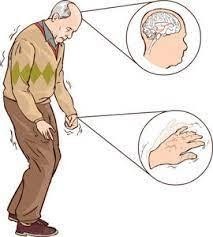When conducting diet teaching for a client who is on a postoperative full-liquid diet, which food(s) should the nurse encourage the client to eat? (Select all that apply.)
Clear beef broth.
Vegetable juice.
Canned fruit cocktail.
Vanilla frozen yogurt.
Creamy peanut butter.
Correct Answer : A,B,D
A) Correct - Clear beef broth is appropriate for a postoperative full-liquid diet, as it is a clear liquid and meets the dietary restrictions.
B) Correct - Vegetable juice can be included in a postoperative full liquid diet, as long as it is free of solid particles.
C) Incorrect - Canned fruit cocktails may contain solid pieces of fruit, which are not suitable for a full-liquid diet.
D) Correct - Vanilla frozen yogurt is a suitable option for a postoperative full-liquid diet, as it is in a liquid state when consumed.
E) Incorrect - Creamy peanut butter is not appropriate for a full-liquid diet, as it is a solid food and does not meet the diet's requirements.

Nursing Test Bank
Naxlex Comprehensive Predictor Exams
Related Questions
Correct Answer is A
Explanation
A) Correct- Clients with Parkinson's disease often experience bradykinesia and impaired mobility. Rising slowly from a seated position is important to prevent falls and maintain stability. Affirming the correct movement strategy promotes the client's safety.
B) Incorrect- Telling the UAP to make the client move more quickly could be unsafe and not appropriate for a client with Parkinson's disease. Rapid movements might lead to balance issues or falls.
C) Incorrect- While demonstrating proper technique might be helpful, it's not the most immediate action the nurse should take. The client's safety and well-being are the priority.
D) Incorrect- Painful movement is not the primary issue here. The client's movement is slow due to Parkinson's disease, and this is expected.

Correct Answer is C
Explanation
A) Incorrect- While understanding the frequency that a problem occurs can provide context to its significance and potential impact, it is not the most important consideration when gathering evidence for evidence-based decision-making. The frequency alone does not ensure that the evidence collected will be directly applicable to the current situation.
B) Incorrect- Personal values are subjective and may influence an individual's perspective, but they are not the primary consideration when gathering evidence for evidence-based decision- making. Evidence-based practice aims to rely on objective and scientifically validated information rather than personal values, which can vary greatly among individuals.
C) Correct- The most important consideration when gathering evidence is its relevance to the specific situation at hand. Evidence must directly address the problem and clinical question, ensuring that the information collected is applicable, appropriate, and reliable for guiding decision-making in the current context.
D) Incorrect- While past experiences can offer insights, they are not the most important consideration for evidence-based decision-making. Relying solely on past experiences may not account for new developments, changing guidelines, or unique aspects of the current situation that were not present in previous encounters.
Whether you are a student looking to ace your exams or a practicing nurse seeking to enhance your expertise , our nursing education contents will empower you with the confidence and competence to make a difference in the lives of patients and become a respected leader in the healthcare field.
Visit Naxlex, invest in your future and unlock endless possibilities with our unparalleled nursing education contents today
Report Wrong Answer on the Current Question
Do you disagree with the answer? If yes, what is your expected answer? Explain.
Kindly be descriptive with the issue you are facing.
